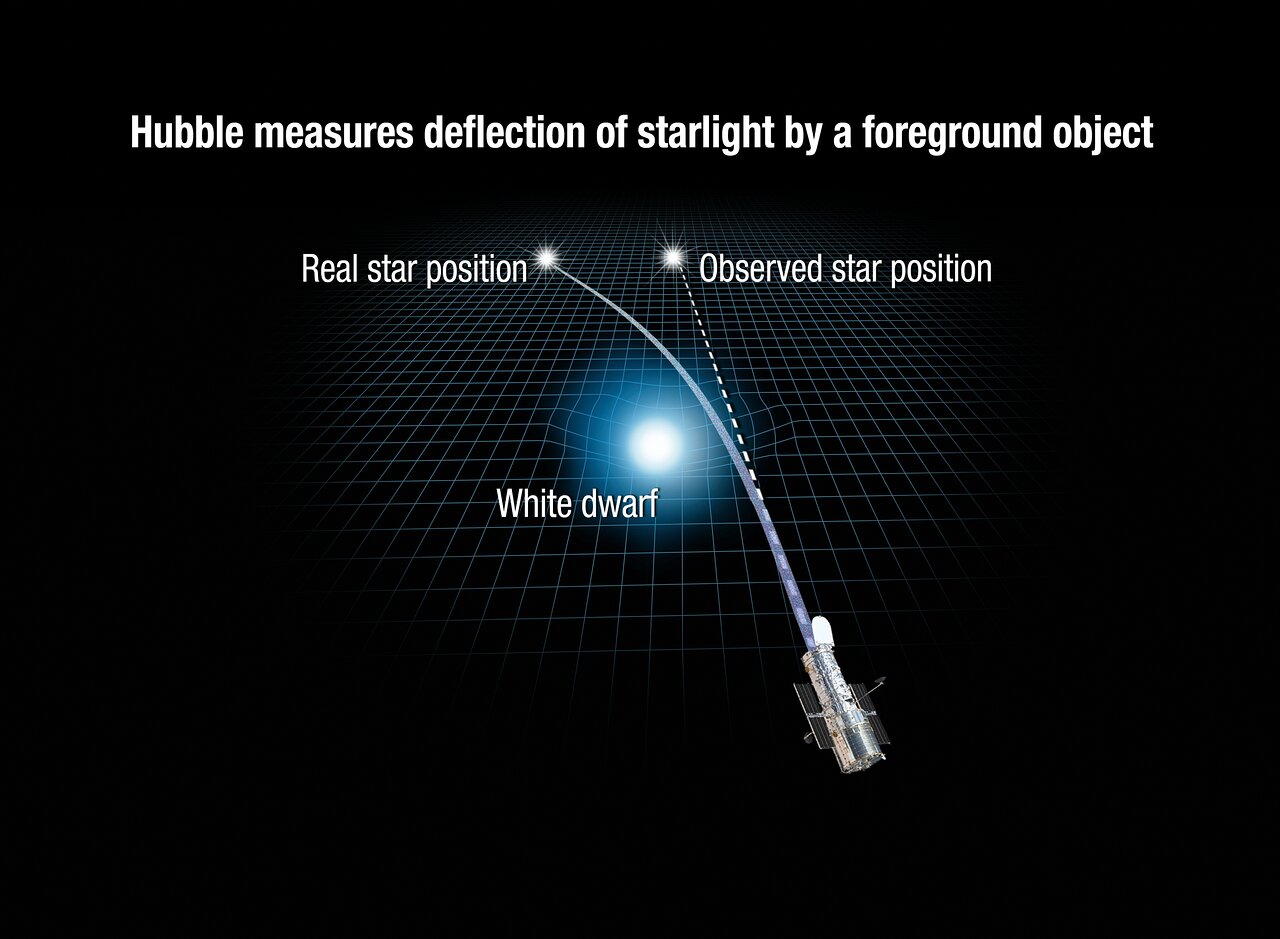Good Lawd! Mass of lone 'dead star' measured for the first time
The breakthrough measurement of the white dwarf LAWD 37 made with Hubble gives us a hint of how the sun will look at the end of its life.
Astronomers have measured the mass of a lone white dwarf star for the first time. This type of smoldering stellar remnant is formed at the end of the lives of low-mass stars and will be what the sun leaves behind when it dies in around 5 billion years.
The Hubble Space Telescope measured the mass of a white dwarf designated LAWD 37, which burned out over 1 billion years ago. In the work, scientists used a phenomenon first predicted in 1915 by Albert Einstein called "gravitational lensing," which involves the bending of light by objects of great mass. The team determined that LAWD 37 has a mass around 56% that of the sun. The finding confirms current theories of how these stellar remnants form and evolve. This particular white dwarf is well studied because it is relatively close to Earth at just 15 light-years away in the constellation of Musca.
"Because this white dwarf is relatively close to us, we've got lots of data on it — we've got information about its spectrum of light, but the missing piece of the puzzle has been a measurement of its mass," Peter McGill, an astronomer at the University of California, Santa Cruz, who led the research, said in a statement.
Related: The best Hubble Space Telescope images of all time!

This is the first time astronomers have calculated the mass of a lone white dwarf, but they have made similar measurements previously for white dwarfs in binary partnerships with other stars.
In pairs, astronomers can get a mass measurement by applying Newton's theory of gravity to the motion of two stars orbiting each other. It can be an uncertain process, however, especially when the companion star has a long orbit of hundreds or thousands of years.
To measure the mass of this singleton star, the researchers turned to Einstein's formulation of gravity, his theory of general relativity.
Get the Space.com Newsletter
Breaking space news, the latest updates on rocket launches, skywatching events and more!
How Einstein helped measure a dead star
General relativity suggests that objects of great mass "warp" the very fabric of space-time. The greater the mass, the larger the "dent" in space it causes.
As light from a background object passes this warp, it is deflected, an effect that can amplify the light or even make the background object appear in multiple places at once. More commonly, however, the warp causes a shift in the apparent position of the background object.
The mass of the lensing object causing the effect can be obtained by measuring how strongly light is deflected and thus the shift in the position it causes when astronomers look at the background object. That's true even if that shift is small, as it is in microlensing events such as the one involving this particular white dwarf.
In the new observations, LAWD 37 acted as a foreground gravitational lens, slightly deflecting the light traveling past it from a background star and offsetting its position in the sky. This offset in position allowed McGill and the team to measure the mass of LAWD 37. Researchers had used a similar process to find the mass of another white dwarf in 2017, but that stellar remnant was in a binary system, not a solo dead star like LAWD 37.

McGill and colleagues were able to hone in on LAWD 37 thanks to the European Space Agency's Gaia mission, which precisely measures the positions of around 2 billion stars. Using multiple Gaia images allows astronomers to track a star's motion, so the team could predict LAWD 37 would pass in front of the background star in November 2019.
Armed with this foresight, the scientists used Hubble over a period of several years to measure the change in the background star's apparent position as the white dwarf passed in front of it.
"These events are rare, and the effects are tiny," McGill said. "For instance, the size of our measured offset is like measuring the length of a car on the moon as seen from Earth."
The team also had to extract the faint light of the background stars from the glare of LAWD 37, which was around 400 times brighter. Fortunately, Hubble is powerful enough to make this kind of high-contrast observation in visible light.
"Even when you've identified such a one-in-a-million event, it's still extremely difficult to make these measurements," Leigh Smith, an astronomer at the University of Cambridge in the U.K. and co-author on the research, said in the statement. "The glare from the white dwarf can cause streaks in unpredictable directions, meaning we had to analyze each of Hubble's observations extremely carefully, and their limitations, to model the event and estimate the mass of LAWD 37."
The team's research is described in a paper published Dec. 6 in the Monthly Notices of the Royal Astronomical Society.
Follow us on Twitter @Spacedotcom or on Facebook.
Join our Space Forums to keep talking space on the latest missions, night sky and more! And if you have a news tip, correction or comment, let us know at: community@space.com.

Robert Lea is a science journalist in the U.K. whose articles have been published in Physics World, New Scientist, Astronomy Magazine, All About Space, Newsweek and ZME Science. He also writes about science communication for Elsevier and the European Journal of Physics. Rob holds a bachelor of science degree in physics and astronomy from the U.K.’s Open University. Follow him on Twitter @sciencef1rst.









